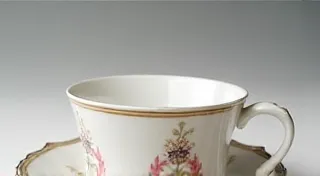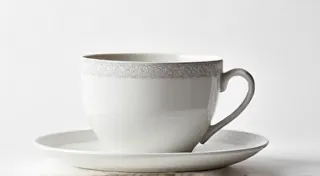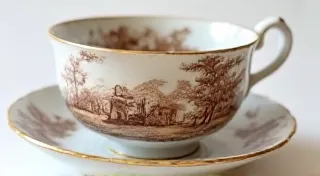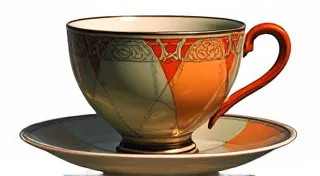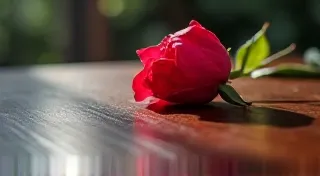Royal Albert Old Country Roses: Authenticity and Variations
Royal Albert's Old Country Roses is arguably one of the most beloved and recognizable patterns in the world of collectible china. Its romantic blend of delicate roses, graceful foliage, and intricate gold accents has captivated collectors for decades. However, its popularity has also made it a target for reproduction, and variations in production over the years can make identification challenging. This guide will explore the key aspects of authenticity and the subtle differences found within Old Country Roses pieces. The allure of antique china collecting is undeniable, and those new to the hobby might find “Tea Cup Collecting: A Beginner's Guide” a helpful starting point.
A Brief History
Introduced in 1962 by Royal Albert, Old Country Roses was initially designed to complement the popular "Memory Lane" pattern. It quickly surpassed its predecessor in popularity and became a signature design for the company. Production continued, with changes to marks and slight alterations to the design, until the factory’s closure in 1997. The pattern has since been reissued by other manufacturers, making distinguishing genuine Royal Albert pieces crucial for collectors. The Victorian era’s emphasis on sentiment and beauty profoundly shaped design principles; exploring “The Gilded Cage: How Victorian Sentimentality Shaped Antique Tea Cup Design & Value” provides deeper insight into the context surrounding these cherished pieces.
Authenticity Checks: Red Flags & Key Indicators
Determining authenticity goes beyond simply admiring the beauty of the pattern. Here are some crucial checks to perform:
- The Backstamp: This is your first clue. Early Old Country Roses pieces (1960s-1970s) feature a Royal Albert backstamp with “England” and the Royal Albert crest. Later marks (1980s-1990s) incorporated “Royal Albert Bone China” and often included the Made in England wording. Fakes often have crude or incorrect backstamps. The font and spacing should be consistent with known authentic marks. Research existing backstamp databases online to compare.
- Bone China Quality: Genuine Royal Albert Old Country Roses is made of high-quality bone china, which is known for its translucency. Hold the piece up to a light source. It should allow light to pass through. Reproductions are often made of a less expensive, opaque porcelain. The delicate nature of bone china reflects a broader appreciation for refined materials during the Victorian period – a time when the influence of “The Influence of Victorian Era Styles on Tea Cup Design” can be clearly observed.
- Gold Gilding: Royal Albert used genuine gold gilding. Examine the gold accents carefully. They should be even and lustrous. Fake gilding often appears dull or has a slightly raised, textured feel.
- Detail & Precision: Authentic pieces are known for their meticulous detail. Examine the roses and foliage closely. Are the details crisp and well-defined? Reproductions often lack the fine detail and precision of genuine Royal Albert pieces.
- Weight & Feel: Genuine bone china has a substantial weight and a pleasing feel in your hand. Lighter, flimsier pieces are more likely to be reproductions.
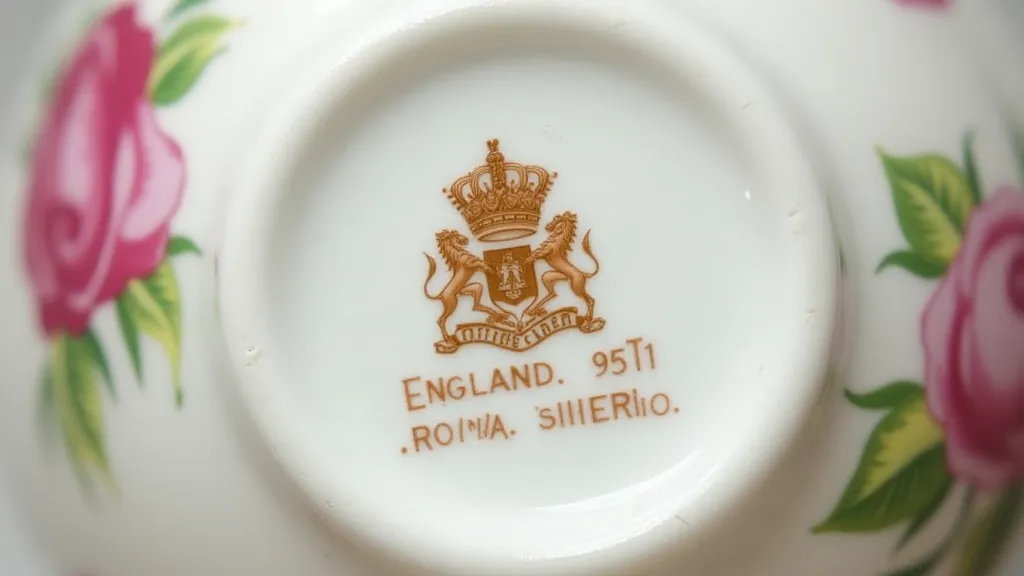
Variations by Production Year
Over the decades, Royal Albert made subtle changes to the Old Country Roses design and manufacturing process. Recognizing these variations can help narrow down the production period and assess value. It's worth noting that rarity and condition also heavily influence value, contributing to the complexity of assessing antique china.
- Rose Placement: Early pieces often featured a more prominent display of roses around the cup’s rim. Later variations might have a slightly more restrained rose arrangement.
- Gold Accents: The amount and placement of gold accents sometimes varied. Early pieces tended to have a more generous application of gold.
- Shape & Size: While the general shape remained consistent, slight differences in cup and saucer sizes can be observed across different production years.
- Color Palette: Minor shifts in the colors of the roses and foliage occurred. Some pieces feature a slightly more vibrant red or a more muted pink. The nuanced color palettes also reflect the evolving tastes and artistic movements of the time, further enriching the history of these pieces.
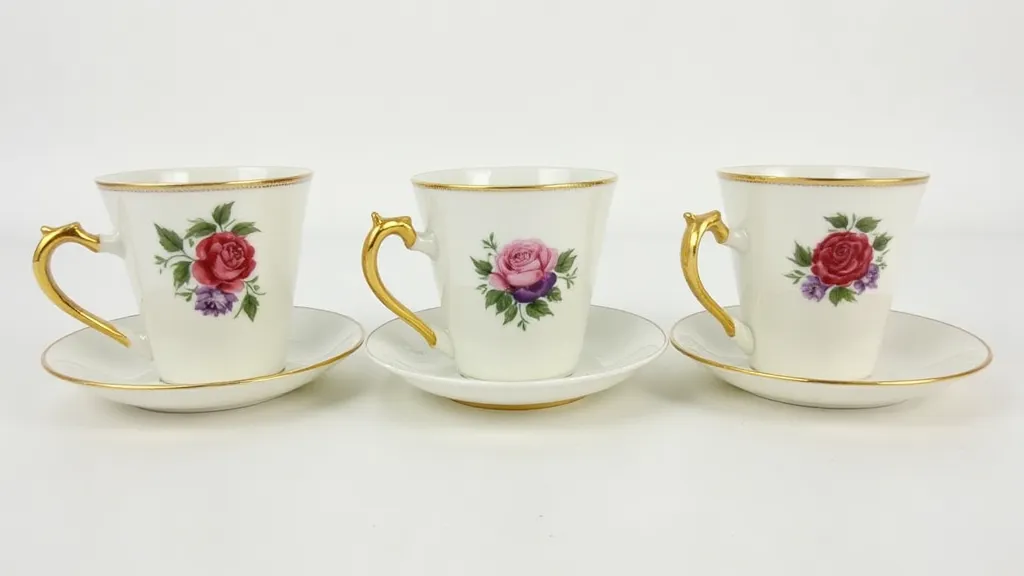
Commonly Found Pieces and Their Variations
While the full range of Old Country Roses pieces is extensive, certain items are particularly sought after by collectors: exploring these collectibles isn’t just about their monetary value, but also appreciating the craftsmanship and artistry involved.
- Tea Cups & Saucers: The standard tea cup and saucer sets are the most common. Look for variations in handle shape and rose placement.
- Coffee Cans: These smaller cups, often used for espresso or small coffees, also exist and display similar variations.
- Cake Plates & Serving Dishes: Larger pieces like cake plates and serving dishes can be valuable, particularly if they’re in excellent condition.
- Pin Dishes: Small pin dishes are popular collectibles and often feature unique variations not found on larger pieces.
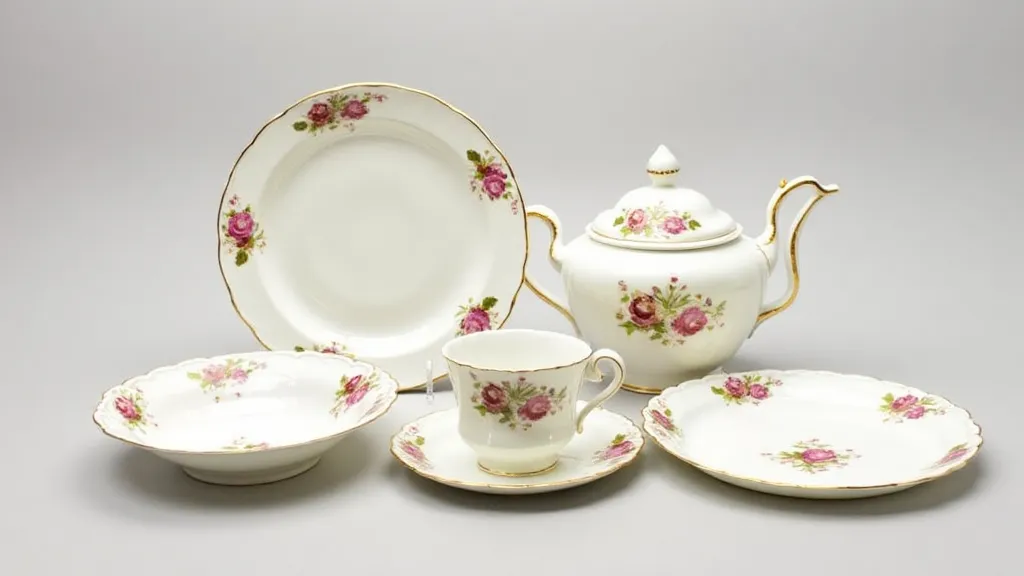
Deeper Dive: Understanding the Marks & Materials
Beyond the basic checks, a keen eye can decipher more subtle details about an Old Country Roses piece. The backstamp is a vital clue, and variations within the mark itself reveal production periods and factory changes. Early marks are often more elaborate, reflecting the brand’s prestige and the higher cost of detailed stamping. As production evolved, and to meet increasing demand, marks became more streamlined, yet retaining key elements of the original crest.
The bone china itself offers further insights. Genuine Royal Albert bone china is derived from animal bone ash, which contributes to its characteristic translucency and strength. This process requires specialized expertise and results in a material far superior to standard porcelain. The density and feel of the china are noticeably different, and experienced collectors develop a keen sense for these tactile cues.
The Collectors' Perspective: Value and Rarity
The value of Royal Albert Old Country Roses pieces is determined by a combination of factors: rarity, condition, and desirability. Pieces in pristine condition, with original packaging (if available), command the highest prices. Certain variations are significantly rarer than others, making them highly sought-after by collectors. For example, pieces with unique color variations, unusual rose placements, or limited-edition markings can fetch premium prices.
While it's possible to find Old Country Roses pieces at reasonable prices, those seeking the most valuable examples should be prepared to invest time and resources in research and authentication. Joining online forums and attending antique shows are excellent ways to connect with fellow collectors and learn from experienced appraisers. The journey of collecting itself is often just as rewarding as the acquisition of the pieces.
Conclusion
Collecting Royal Albert Old Country Roses can be a richly rewarding experience. By understanding the key indicators of authenticity and recognizing the subtle variations in production, you can build a valuable and beautiful collection. Remember to always research and compare before making a purchase, and consult with experienced collectors or appraisers if you have any doubts. Discovering the history and artistry behind these cherished pieces adds a deeper appreciation for their enduring appeal. If you are curious about other valuable china patterns, you might find “Rare Tea Cup Patterns: Discovering Treasures” an engaging read.

